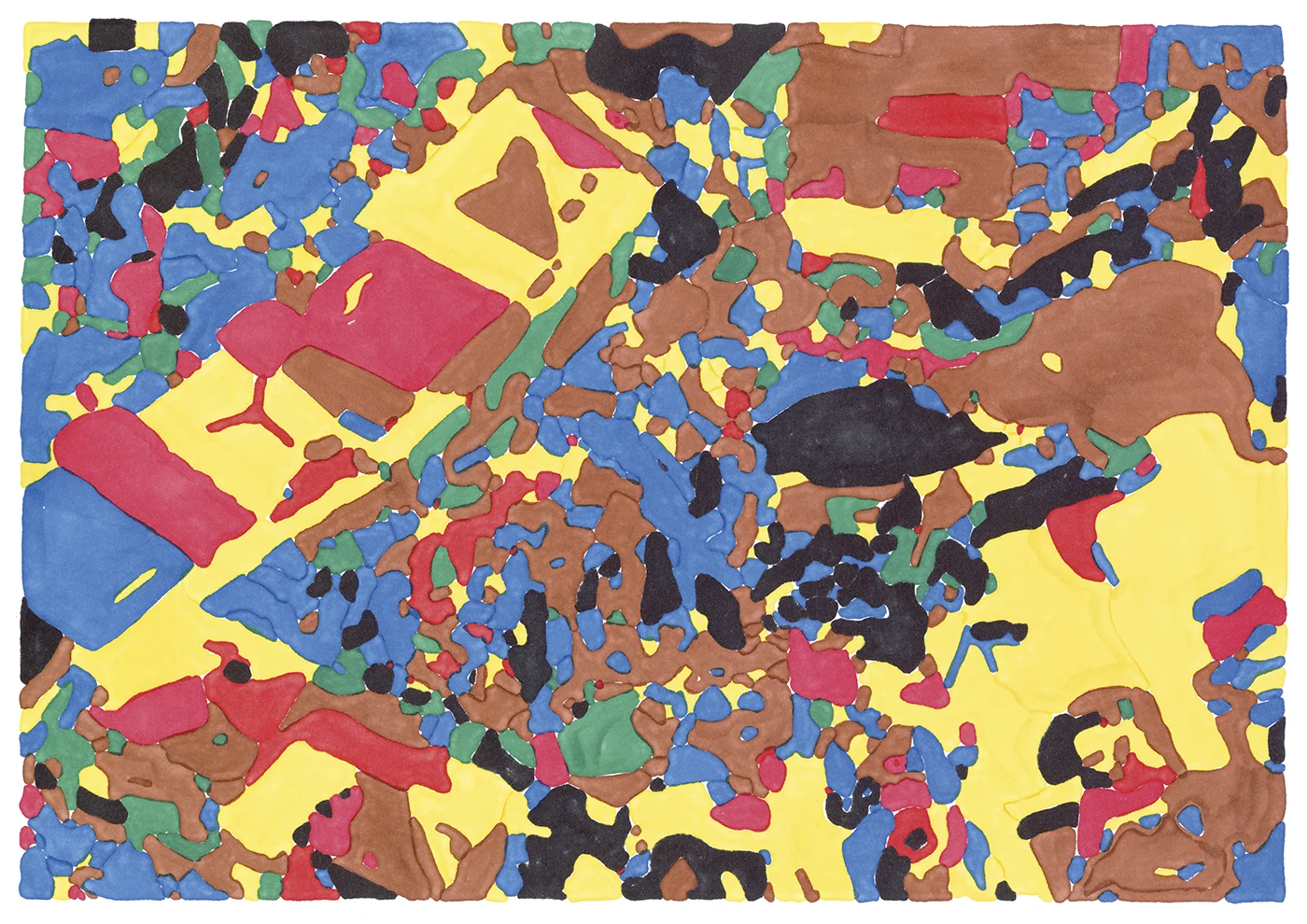
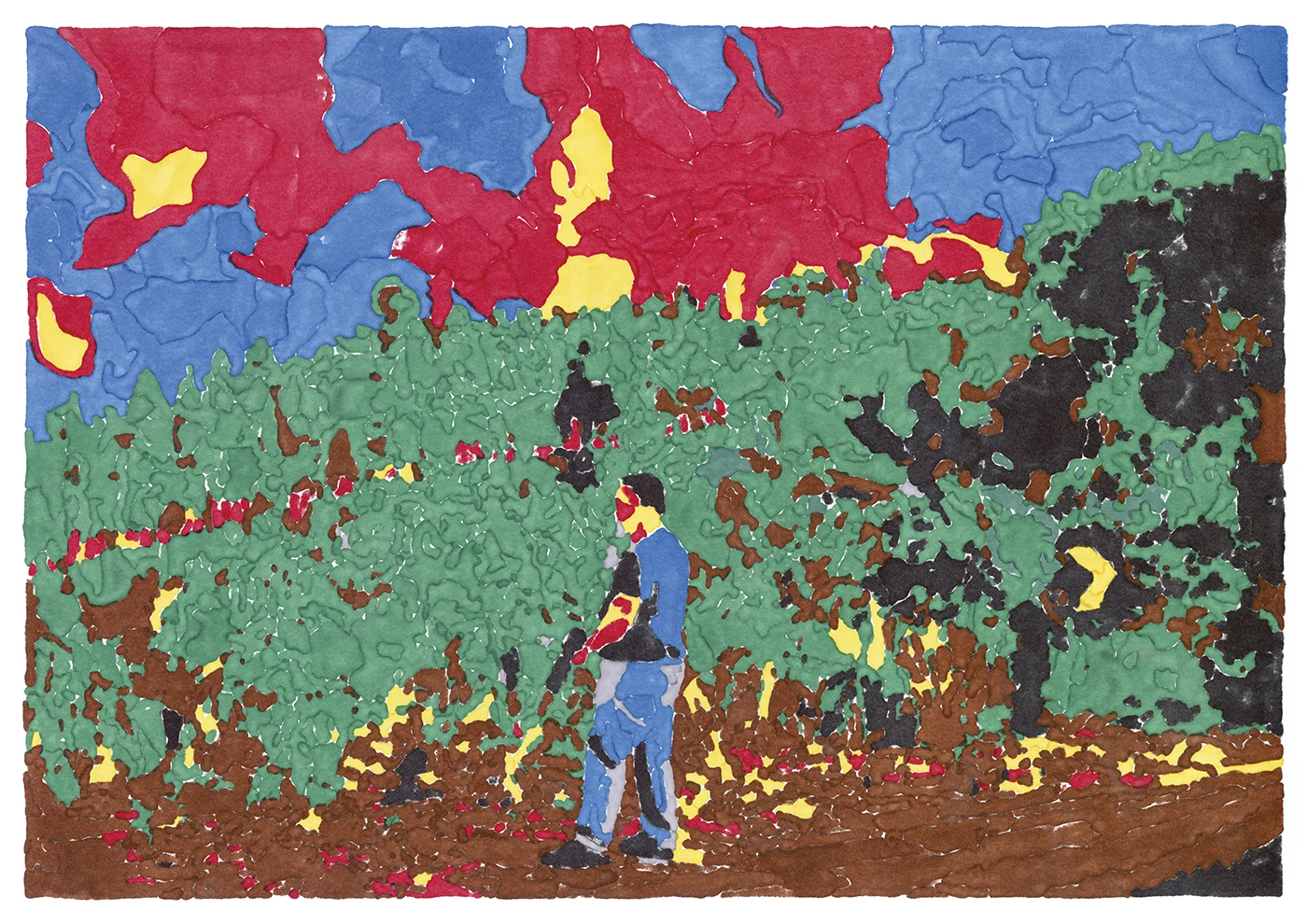
Using drooly alcohol markers, Fanélie Muselier reimagines vivid images of natural disasters as abstract illustrations. The heavy ink from the markers nearly damages the paper, drawing a symbolic parallel between a raging typhoon or a hurricane and her destructive creative process. She tells writer Ritupriya Basu how turning the realistic images into abstract, fuzzy patterns shines a new light on the photographs that are often difficult to look at.
There’s a certain fearlessness about Fanélie Muselier’s work. Be an animated video which demands 1,740 hand-drawn frames, or a series of illustrations that references harrowing natural disasters – each of her projects are a challenge in itself. Cata, a series of illustrations, put together by Fanélie last year, best highlights her work’s inherent sense of intrepidity. In it she recreates images from sites of natural disasters with alcohol felt pens, turning the realistic photographs into abstract artworks which gravitate towards themes of destruction and control.
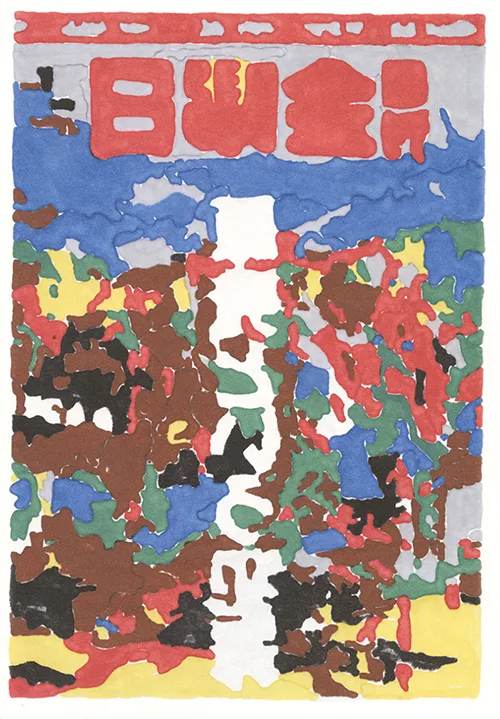
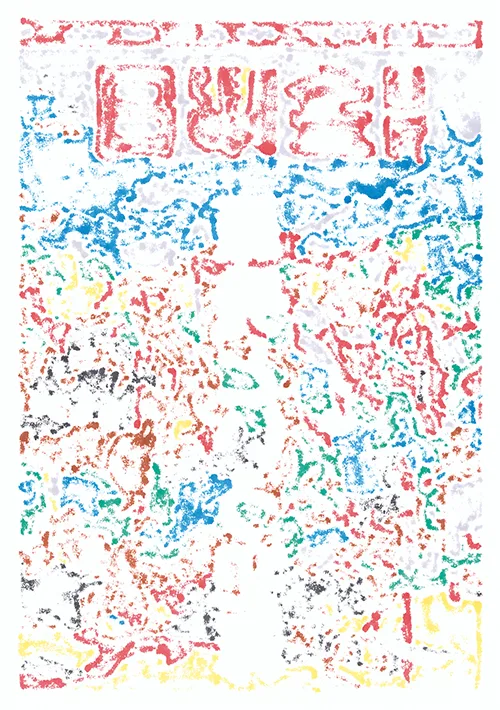
Fanélie began working on Cata while studying graphic design at ECAL in Lausanne, Switzerland. While delving into the course, she developed an affinity for videos and illustrations, while also rediscovering early creative influences, like the works of Egon Schiele, Ellsworth Kelly, Paul Gauguin and Peter Blake. “I’m also a big fan of the Memphis movement, especially Ettore Sottsass,” she says.
Soon, she began experimenting with illustration through self-initiated projects. “My practice as a designer is not anchored,” she notes. “What ties my work together is color. I’m unhappy without it.” Growing up in the sunkissed city of Marseille in South of France deeply influenced Fanélie’s vibrant illustrative style. “I’ve always had the sun and the sea around me. The strong accents of Marseille have definitely filtered into my work, which I like to think of as ‘sunny graphic design.’”
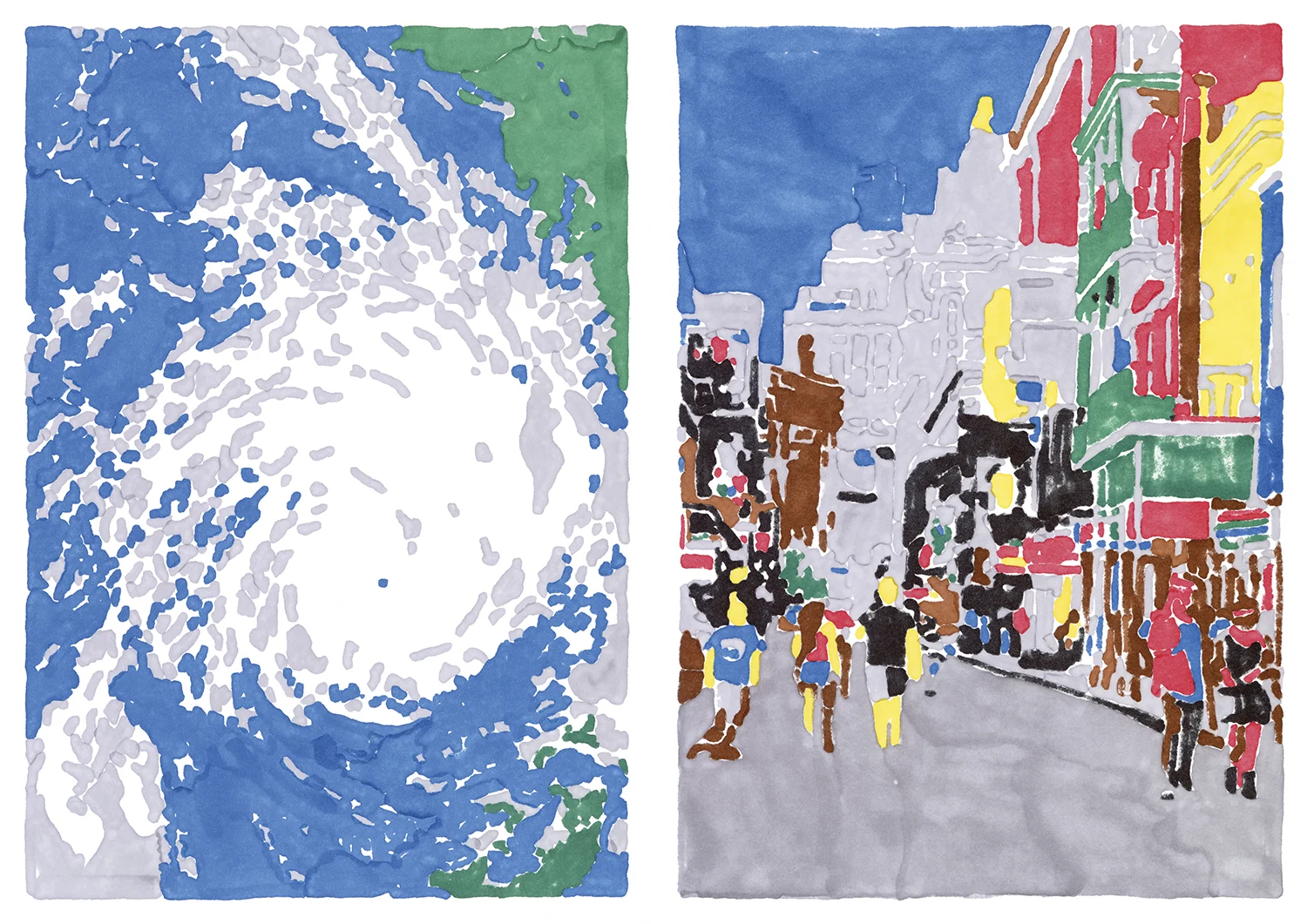
I am fascinated by human beings and by what they are capable of accomplishing.
While working with alcohol felt markers, color becomes a guiding principle that shapes Fanélie’s projects. The ink from the alcohol pens bleeds on the paper, creating fuzzy, dappled patterns. The technique turned her animated music video for Whodat – a track by New Orleans-based band Nola Is Calling – into something of a showstopper. In the video, Fanélie animates a continuous walk through the streets of New Orleans, turning the landscape of the city into a canvas. “Although I had already used this alcohol felt pen drawing technique for other projects before, I wanted to push this medium with Cata,” says Fanélie. “The alcohol pens I use tend to drool and attack the paper, which is what draws me to this medium. The result is always different and unpredictable.”
Her creative process draws a symbolic parallel with the characteristics of natural disasters. “These markers are very thick, and they’re often difficult to handle, because they tend to damage the paper. I wanted to take this aspect of the medium into account while making these illustrations that show ‘before and after’ images of sites hit by natural disasters, because the felt tip destroys a bit of my drawing. The result is less smooth and clean,” she says.
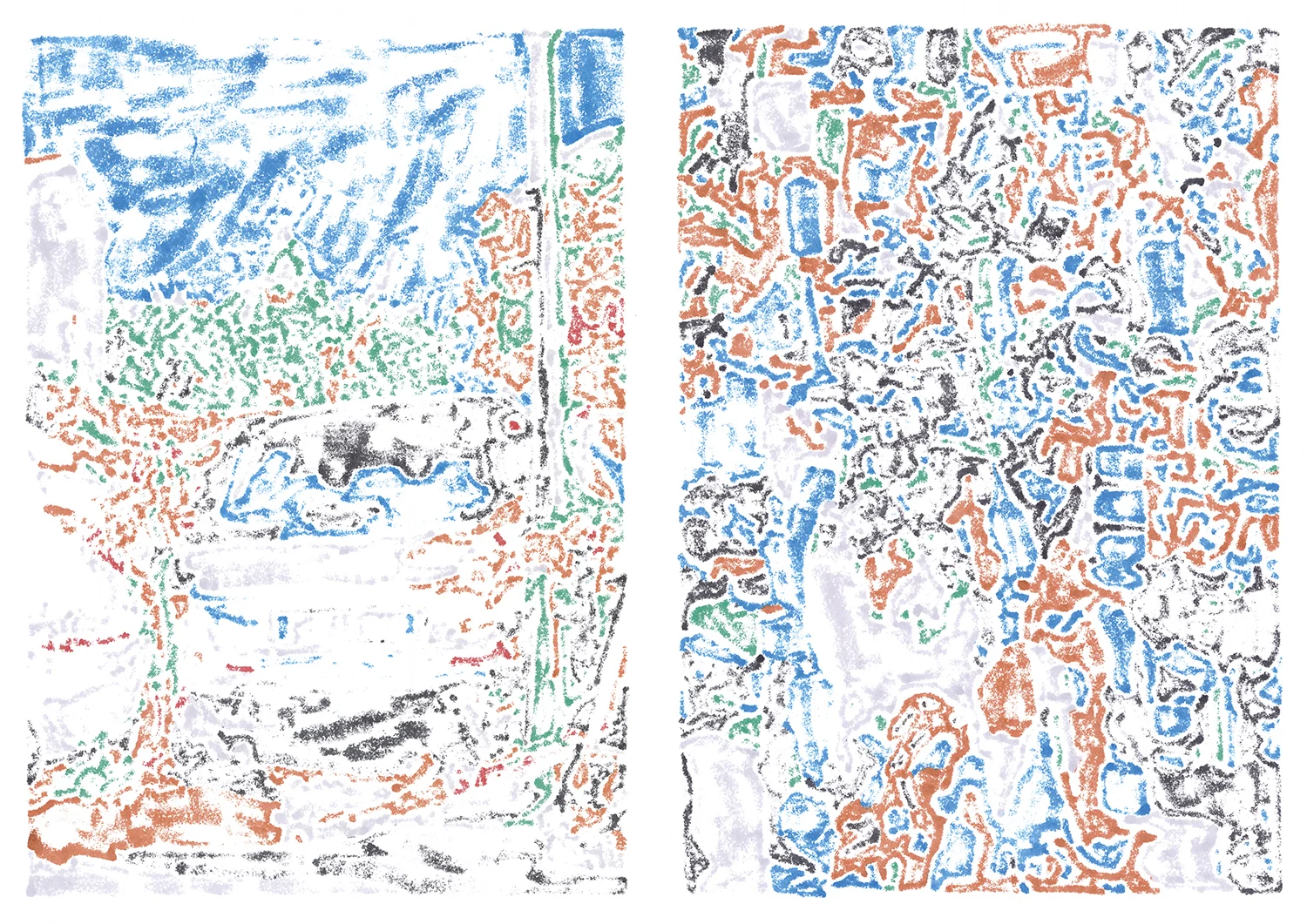
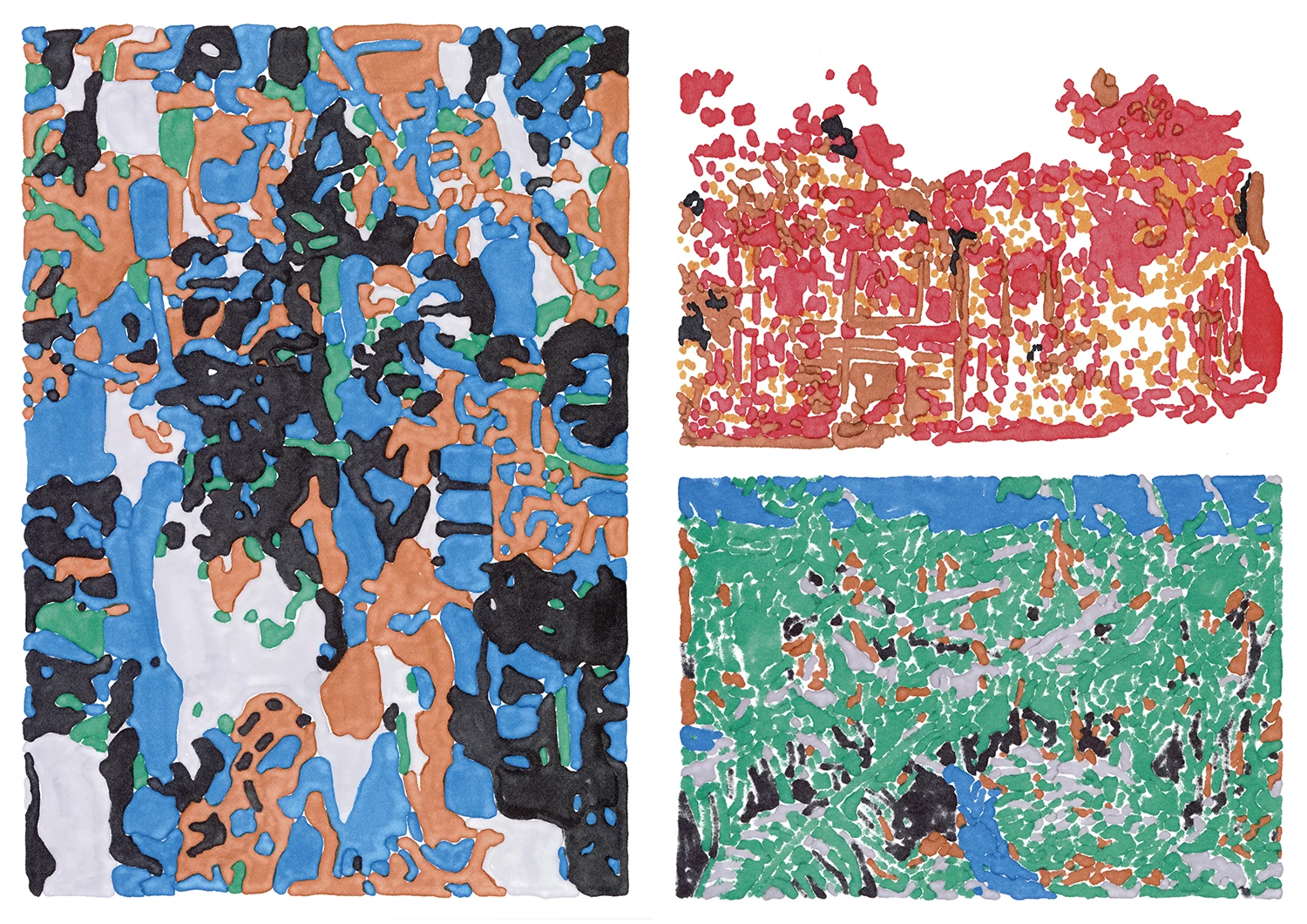
Not all natural disasters are our fault, but some could have been avoided.
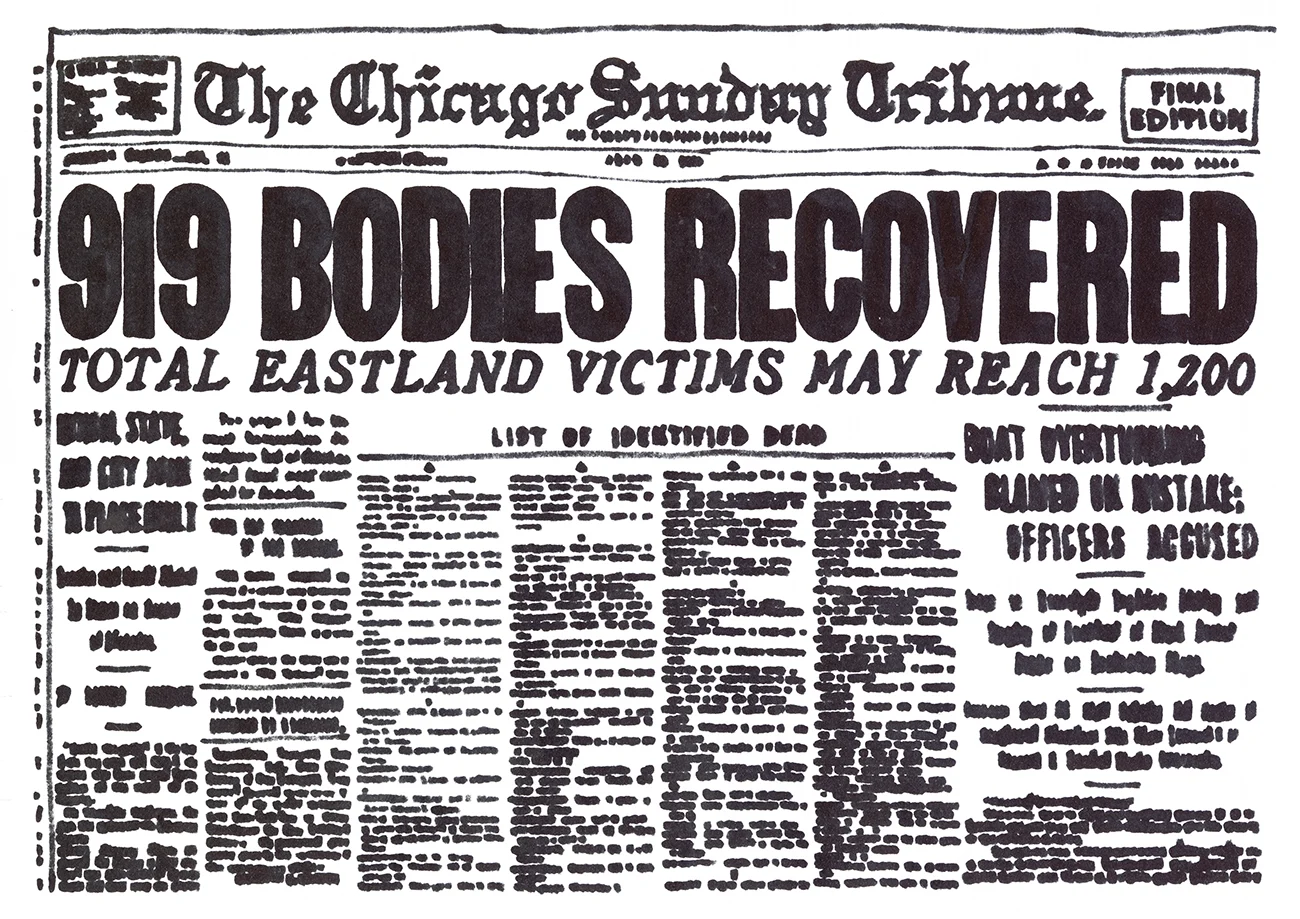

By reproducing the photographs, Fanélie completely destroys the original image and replaces it with a hand-drawn, abstract imprint. “The medium allows me to tease the border between abstract and figurative; a constant dialogue that links the whole project together.”
Not without its challenges, Cata demanded a fair share of research. The images of the natural disasters – the starting point of the project – depict absolute destruction and mayhem while lending themselves to be reinterpreted by an artistic perspective. “It’s not easy to find these kinds of images, and to then ‘sublimate’ them through the creative process,” says Fanélie. “I focused on the images that most impressed us during these events, such as the front pages of newspapers, photographs of cyclones, storms and fires; I wanted to talk about the images that we would rather not see.”

The intrinsic chaos of natural disasters doesn’t come across in the artworks; Fanélie’s considered color palettes become a tool with which she controls and guides the project. She uses color to codify the elements that can cause a natural disaster: wind, earth, water, fire and air. The passage from one element to another is illustrated by one color transitioning to another. “For example, blue gives way to red,” she says.
After experimenting with a wide range of colors, she circled back to the shades most present in nature: green, red, blue, brown and yellow. “The palette formed an interesting restriction, allowing me to go against all expectations and create unpredictable images,” notes Fanélie, reminding us that creativity delivers despite constraints, or perhaps even because of them.
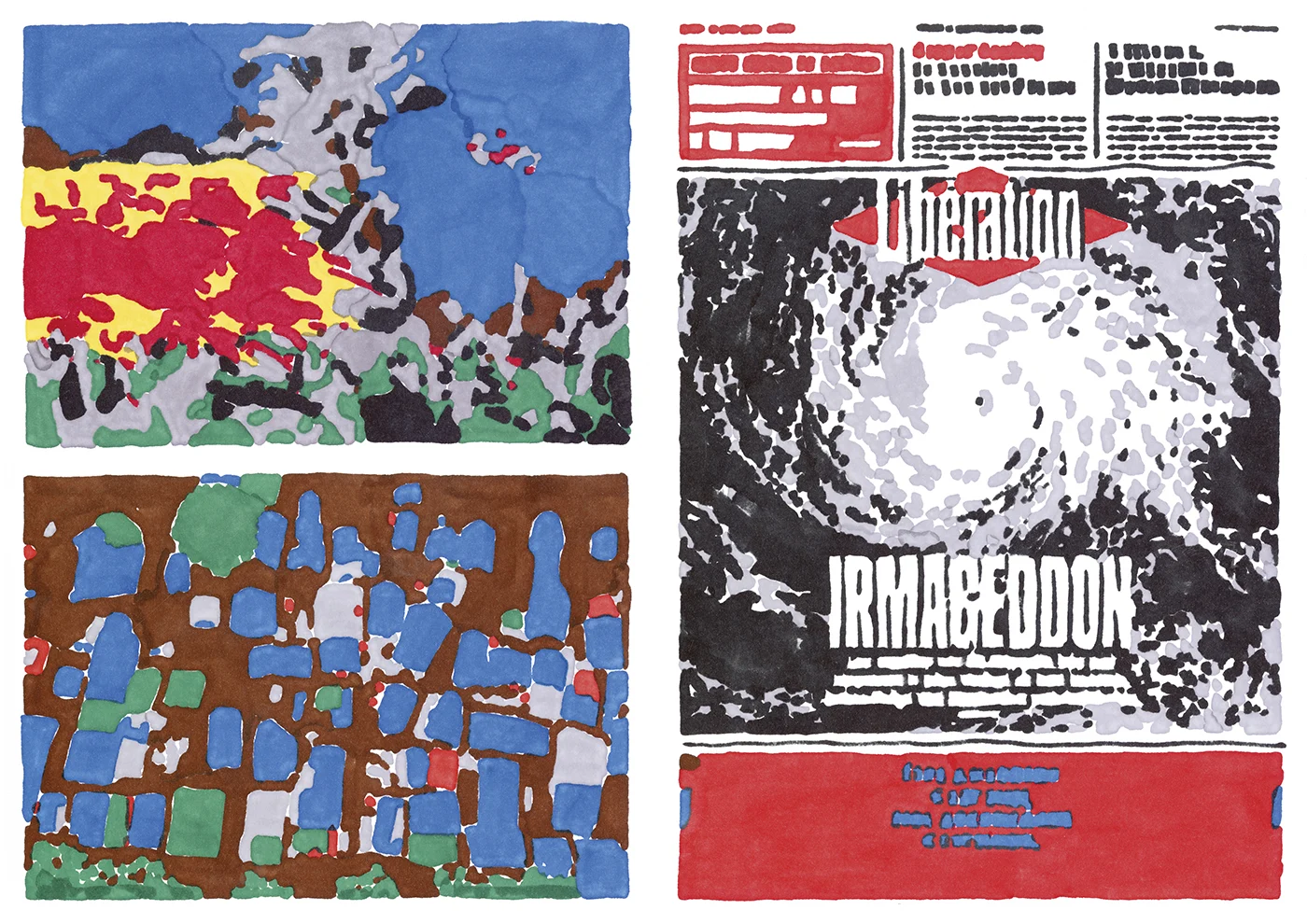
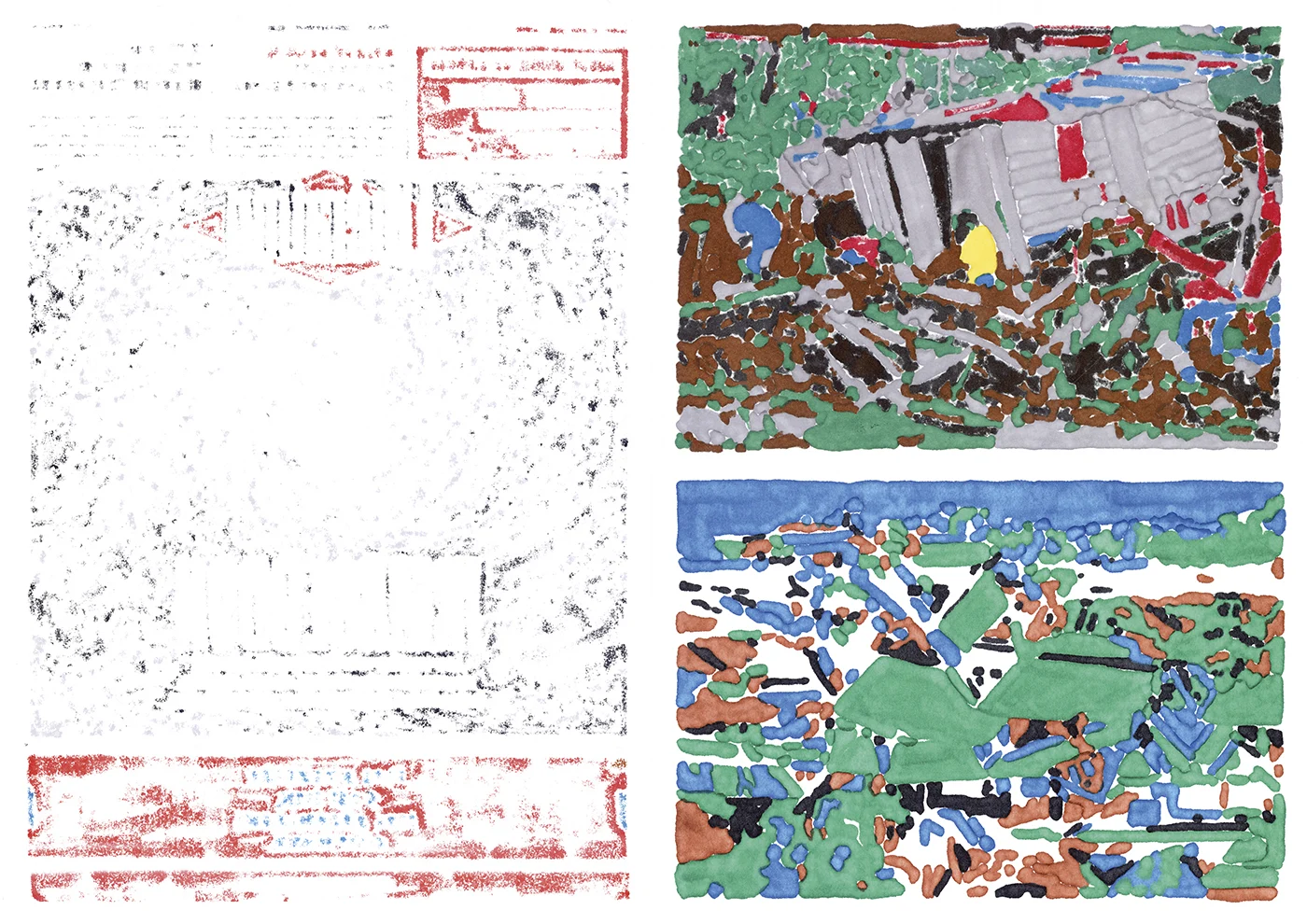
What at first glance seems like an abstract, freewheeling experiment with drooly markers, only reveals its complexity at a closer look. Skipping between images of busy streets before they were hit by a typhoon, the urgent headlines of a newspaper announcing a catastrophe, or a satellite image of a swirling storm, each illustration from Cata seems especially timely, with the looming threat of imminent natural disasters spurred on by climate change. “I am fascinated by human beings and by what they are capable of accomplishing,” she says, “but I am also horrified by their foolishness at times. Not all natural disasters are our fault, but some could have been avoided.”
Fanélie’s penchant for teasing the intersection between the abstract and the figurative is felt through a large chunk of her work. Almost every project is not what it first seems to be, and makes room for some self-interpretation. “I try to be subtle in the treatment of my images, so that even though they’re abstract, a bit of it is still recognizable,” she notes. “I also like the idea that we don't understand everything, and that our imaginations do the rest.”
